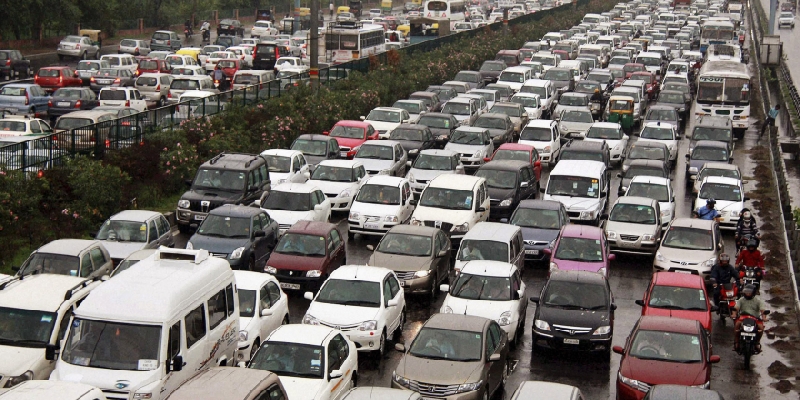We give you a detailed account on how to go about buying a used car in the the highly unorganized second hand car market.
All of us at some point have come across long rows of cars with ‘’For Sale” placards in our respective cities. And when there’s everything available in the second hand market from Maruti 800s to low mileage BMW M5s and Bentley Continental GTs, it can be tad overwhelming for an inexperienced used car buyer to make the right choice. We tell you in the detail the right way to go about buying a used car so that you don’t become one of the casualties of this highly unorganized sector.
Make Up Your Mind
The most important thing to do first is to decide. With an ocean of choice around, this can be the most difficult part. When zeroing in on a car, it is always important to jot down all your requirements and prioritize them, as you’ll need heaven’s choicest blessings to come across the perfect package. Before you start strolling in the used car alley, make sure that you have at least made up your mind as to what kind of vehicle that you would like buy – a small car, hatchback, a three-box sedan, a full-blown SUV, etc. Also, it would help immensely, if you have a minimum and maximum budget in mind.
The Research
You’ll figure, it is much more comforting to step in to the market when you know what you want. It saves you from wasting time on unnecessary distractions and concentrate only on the available cars from your list. Once the car and budget is fixed, you need to get down to some ground work. Finding cars can take time and is an exhaustive process. The easiest way is to make use of online resources. Search tools on various websites enable you to shortlist cars depending on their make, model year, mileage, engine, trim level, locations and what not. it is a lot easier doing this from from the comfort of your home or office than visiting used car dealerships. Once you’re done with this, you will need to start calling people and fixing appointments to check out the car.
Check Out the Car
This is the point where most people are taken for a ride, and not just literally. Checking out the car demands a certain amount of skill, so if you are not too sure about things take someone who knows the innards of a car along. Fix a time in broad daylight as it is easier to inspect the car. Shiny bodywork might mean a well-kept car but can also translate to replacement panels after a serious accident.
Pop that hood and go under the skin. The mounting panels behind the bumpers, where headlamps and grille are mounted are a good place to start as they are bound to get damaged in the event of a serious front collision. Also check the radiator mountings. Check for corrosion and rusty bolts. They might cause serious trouble in the future. If you can, check the underbody for serious damage and skid marks. Needless to say, check the bodywork all around, especially the door sills and also check to see if the doors shut without any obstructions. Check the tyres since replacing a set can be expensive. Open the boot and check the spare wheel. It sometimes shows signs of abuse. Also stand behind the car and check if the front and rear tracks are aligned in the same line. If they are offset, this is a sign of serious chassis damage.
Once you’re inside, check if all electricals are working, right from the light switches, audio system and cabin lights to all power window switches and power mirror controls. Also check if the central locking works perfectly. Check seat adjustments, especially if they are electric. These niggling issues can be expensive fixes.
The Test Drive
Then comes the test drive part. This should be fairly simple if you can gauge if everything is working just fine. Don’t expect it to work like clockwork. Consider yourself lucky if it does, but you can expect a few signs of distress from a used car. It is important to see if the clutch is progressive (and not jerky), gears slot positively and engine revs freely right till the redline. Keep your eyes open for sudden hiccups while accelerating and slowing down and jerky power delivery. Smooth performance is an assurance of some decent amount of life left in the engine. Check brakes, they should be progressive and bite should be decent. Ask the owner if (and when) he got the brake pads replaced. It is always advisable to get the car checked thoroughly by a trained mechanic, given you have that kind of time in your hands and the owner of the car is willing.
The Finances
While you are doing all of this, do not neglect the most important part – the finances. If you’re smart enough, you’ll already have either the cash ready or a ready strategy to get the funds organised quickly. All major banks offer finance on used cars but the rate of interest is pretty high, soaring up to 20 per cent in some cases. This means the car will effectively cost you double its value if you take up a five year loan. Check with your bank for deals based on your employment status and relationship with the bank. Sometimes it is also advisable to go in for a personal loan as the rate of interest works out to be cheaper. There is a lot of paperwork involved so keep important documents like copies of your identity proof (passport, driving license, voter’s ID), address proof, PAN card, bank statements and photographs handy.
Another way to handle this is through a DSA (direct selling agent) for bank loans. Your car dealer might be one in all probability and will cut down your running around time by a fair margin. Double and triple check the rate of interest, EMI amount and tenure of the loan before signing on the dotted line.
Overall, buying a used car is big exercise, much more exhausting than buying a first hand car and those hours spent in the sun might also lead you to lose a few extra pounds. Nevertheless, if you think it’s worth the effort, go for it. Just be careful, do your homework, don’t become a victim and trust no one, except your own eyes and mind.





